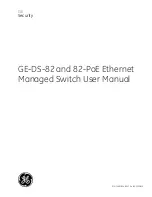
186
SALES: 0870 90 10 750
Dual Trunk E1 Router User’s Guide
Dual Trunk E1 Router
Use the set metric-type command to set the metric type for the destination routing protocol.
Use the no form of this command to return to the default.
Command Syntax
(no) set metric-type 1|2
1 = Select to set external type 1 metric.
2 = Select to set external type 2 metric.
Default
Command Mode
Route-map mode
Usage
Examples
In this example the metric type of the destination protocol is set to OSPF external Type 1.
ospfd# configure terminal
ospfd(config)# route-map rmap1 permit 3
ospfd(config-route-map)# set metric-type 1
Related Commands
set next-hop
Use the set next-hop command to specify the next-hop address. Use the no parameter of this command to reset the
default next-hop value.
Command Syntax
(no) set next-hop A.B.C.D
A.B.C.D = IP address of the next hop router.
Default
Command Mode
Route-map mode
Usage
Every routing table entry has a next-hop value. Once the next-hop value is calculated, the router gives the value to the forwarding
engine.
To set the next-hop, you must first have a match clause. Match and set commands set the conditions for redistributing routes from
one routing protocol to another. The match command specifies the match criteria under which redistribution is allowed for the
current route-map. The set command specifies the set redistribution actions to be performed, if the match criteria are met.
Examples
In the following example, routes that pass the access list have the next hop set to 10.10.12.50:
ospfd# configure terminal
ospfd(config)# route-map rmap1 permit 3
ospfd(config-route-map)# set next-hop 10.10.12.50
Related Commands
set tag
Use the set tag command to set specified tag value. Use the no form of this command to return to the default.
Command Syntax
(no) set tag TAGVALUE
TAGVALUE = <0-4294967295> Tag value for destination routing protocol.
Default
Command Mode
Route-map mode
Usage
Tag in this command is the route tag which is labeled by another routing protocol (BGP or other IGP when redistributing), because
AS-external-LSA has route-tag field in its LSAs. And also with using route-map, ospfd can tag the LSAs with appropriate tag
value. Sometimes tag matches with using route-map, and sometimes the value may be used by another application.
Examples
In the following example the tag value of the destination routing protocol is set to 6:
Summary of Contents for LRU4240
Page 16: ...Dual Trunk E1 Router Dual Trunk E1 Router User s Guide TECHNICAL 0118 96 56 000 12 ...
Page 17: ...Dual Trunk E1 Router Dual Trunk E1 Router User s Guide TECHNICAL 0118 96 56 000 13 ...
Page 18: ...Dual Trunk E1 Router Dual Trunk E1 Router User s Guide TECHNICAL 0118 96 56 000 14 ...
Page 19: ...Dual Trunk E1 Router Dual Trunk E1 Router User s Guide TECHNICAL 0118 96 56 000 15 ...
Page 20: ...16 SALES 0870 90 10 750 Dual Trunk E1 Router User s Guide E1 NTU with QoS User s Guide ...
Page 32: ...20 SALES 0870 90 10 750 Dual Trunk E1 Router User s Guide Dual Trunk E1 Router ...
Page 86: ...74 SALES 0870 90 10 750 Dual Trunk E1 Router User s Guide Dual Trunk E1 Router ...
Page 96: ...84 SALES 0870 90 10 750 Dual Trunk E1 Router User s Guide Dual Trunk E1 Router ...
Page 106: ...94 SALES 0870 90 10 750 Dual Trunk E1 Router User s Guide Dual Trunk E1 Router ...
Page 112: ...100 SALES 0870 90 10 750 Dual Trunk E1 Router User s Guide Dual Trunk E1 Router ...
Page 120: ...108 SALES 0870 90 10 750 Dual Trunk E1 Router User s Guide Dual Trunk E1 Router ...
Page 148: ...136 SALES 0118 965 5100 Dual Trunk E1 Router User s Guide Dual Trunk E1 Router ...
Page 218: ...206 F ...
















































